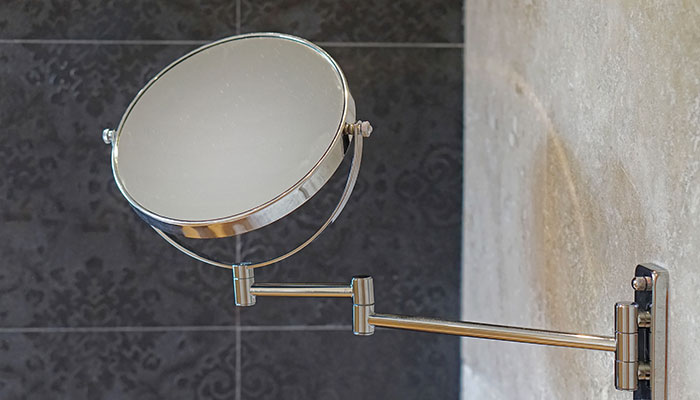
The bathroom is often the most challenging (and least safe) room in the house for someone who is visually impaired: Poor lighting, or lighting that’s too bright. Lots of white-on-white furnishings and shiny fixtures. Hard-to-read settings on faucets. Tiny caps and tamperproof closures on personal care products and medications. And many small items for specialized tasks. Consider the adaptations below as you strive to make your loved one’s home environment support their independence.
Color contrast. Linens such as towels and washcloths should be a strong color contrast with wall, tub, and counter surfaces. Install a nonskid, high-contrast bath mat so your relative knows where to stand and not slip. Wrap grab bars with colored tape so they stand out from other shiny surfaces. Teach your loved one to float a brightly colored sponge when filling the tub to more easily ascertain water height. A contrasting color for the toilet seat is also helpful.
Lighting. Experiment with different types of light in different situations. For instance, there are toilet lights that give off a soft glow inside the bowl for nighttime navigating. For detailed work, like shaving or putting on makeup, add a magnifying mirror on a flexible arm. Some include lighting.
Faucets. Set the hot water heater to medium-range temperature. Mark sink and shower faucets with a bright color or contrasting texture to show the position for comfortable hot water. Have your relative use an on/off, handheld shower nozzle to test shower water temperature before stepping in. In two-faucet situations, learn to turn on the cold water first, then add hot water. Similarly, turn off hot water first and then the cold.
Clutter. Purchase a shower caddy to keep shampoos, razors, and soaps all in one place. Place a rubber band around the shampoo bottle to distinguish it from the conditioner. Provide soap on a rope so the soap is less likely to slip away.

